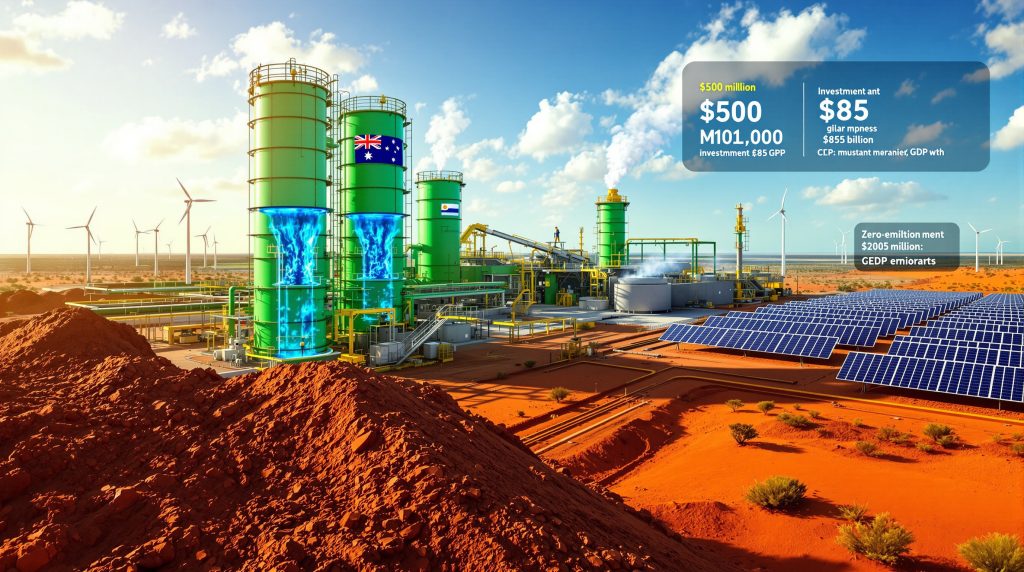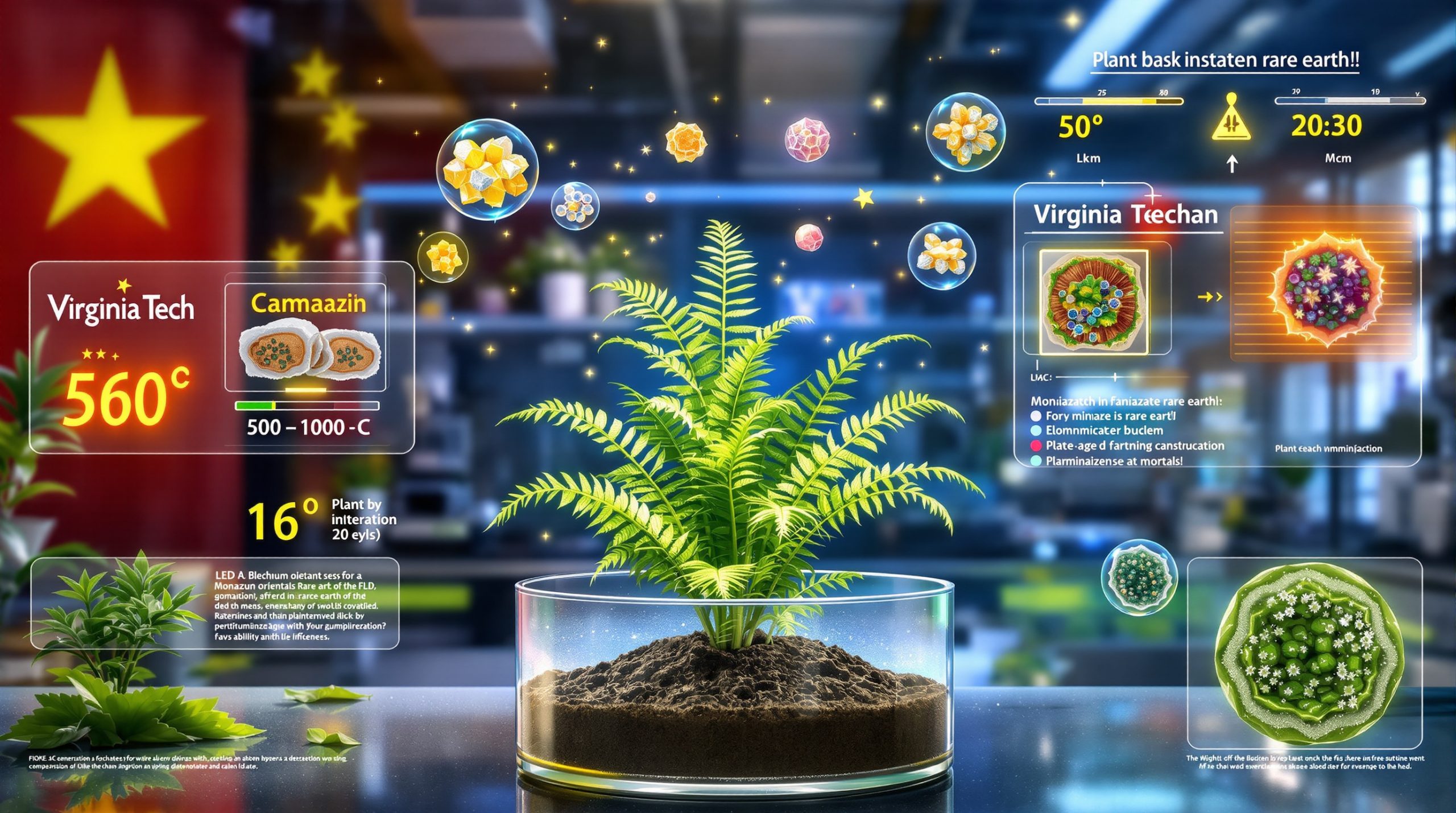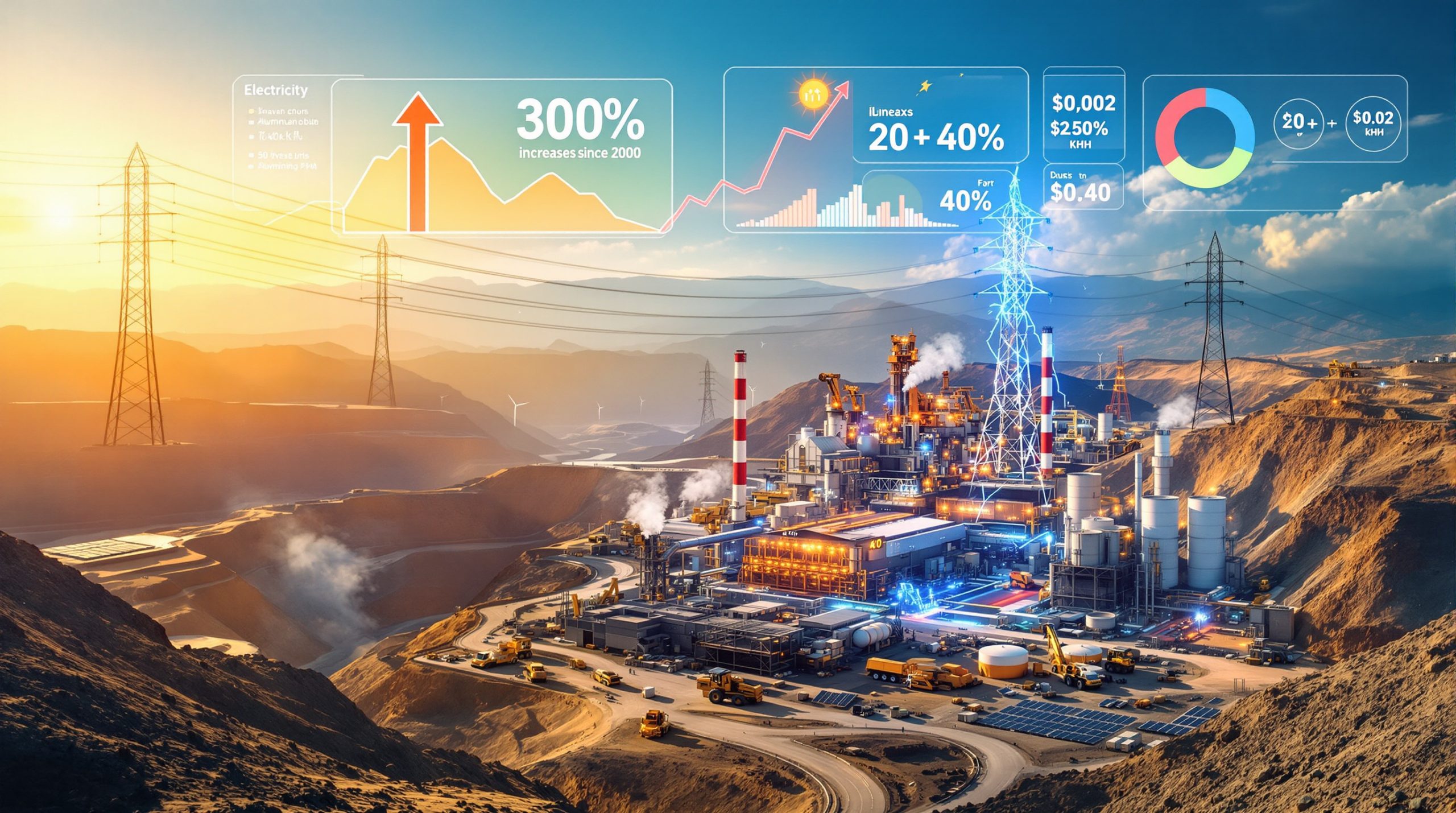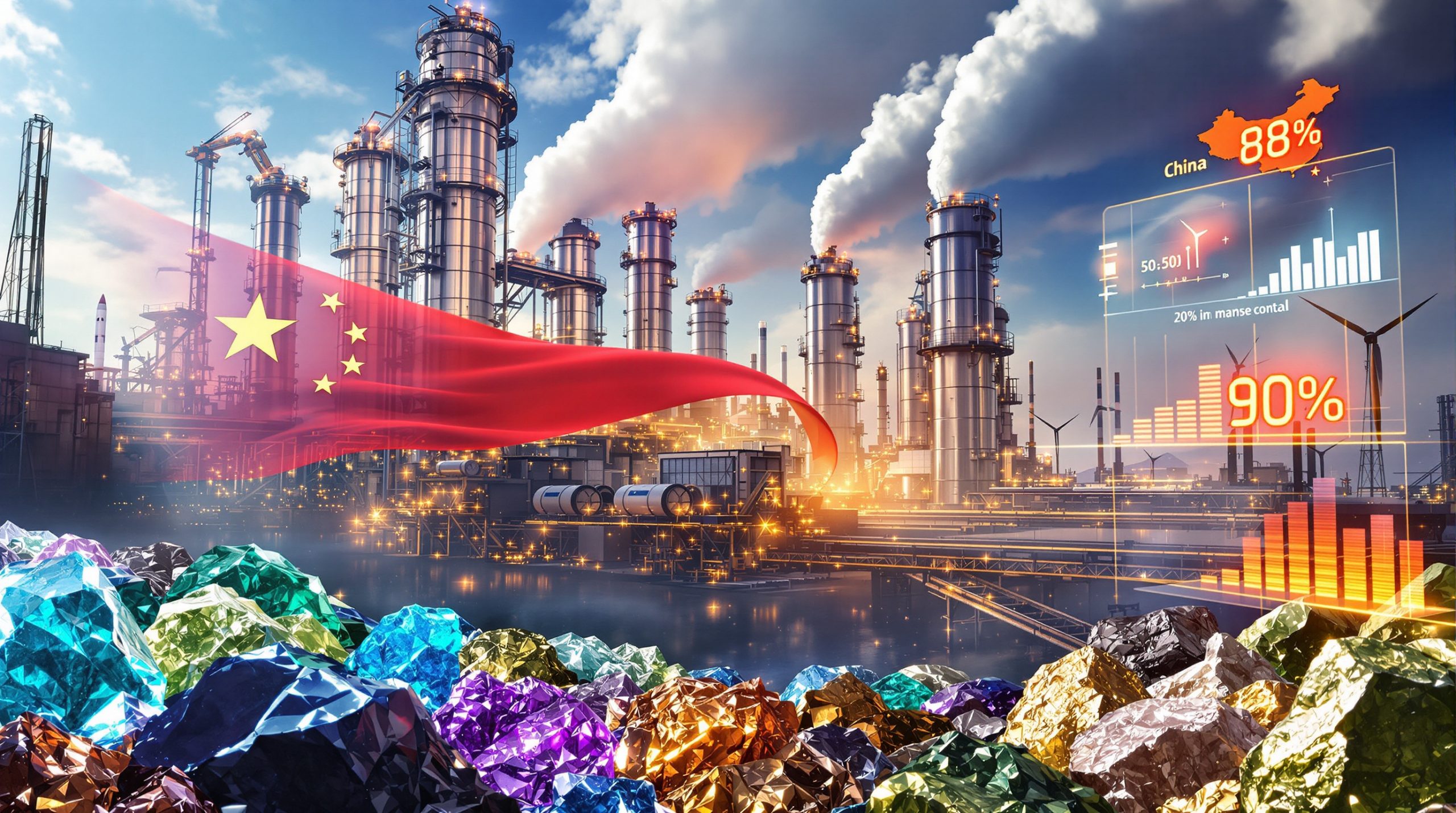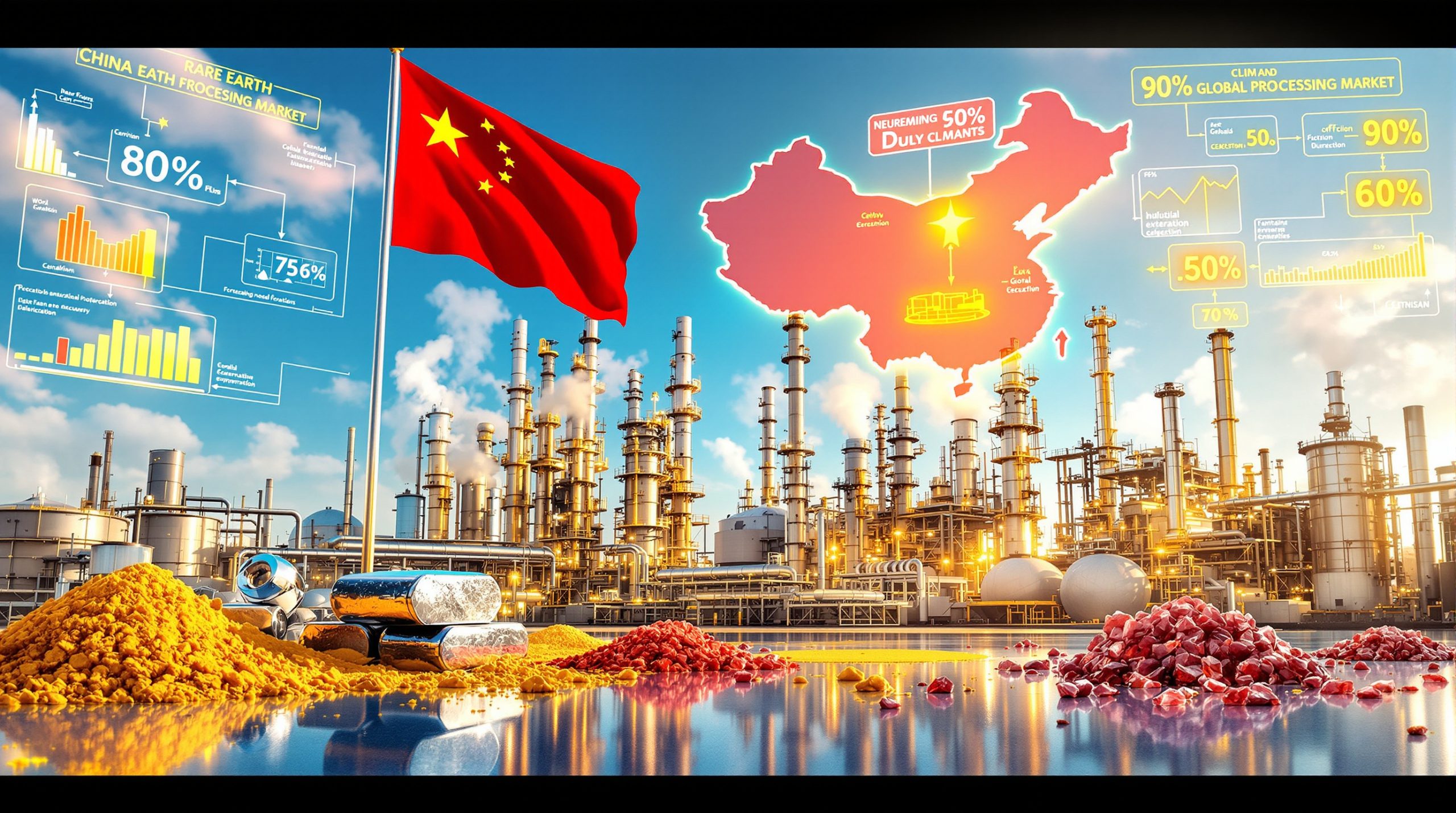Australia's Green Iron Revolution: Transforming the Mining Sector with $500 Million Investment
In a landmark move poised to reshape Australia's industrial landscape, the Federal Government has committed $500 million to develop the nation's green iron industry. This substantial funding represents a strategic pivot from Australia's traditional role as a raw materials exporter toward becoming a manufacturing powerhouse in the global steel supply chain while simultaneously addressing climate challenges in one of the world's most carbon-intensive industries.
The investment, part of a broader $1 billion Green Iron Investment Fund, aims to establish Australia as a leader in low-carbon steelmaking by incentivizing private investment and leveraging the country's abundant natural resources and renewable energy solutions.
Understanding the Green Iron Opportunity
The $500 million grant program targets both existing facilities and greenfield projects across Australia, with the National Development Stream opening applications on October 28, 2025, and closing on January 16, 2026. This initiative forms part of the government's strategy to establish commercial-scale green iron production facilities that can transform Australia's position in global markets.
Minister for Industry and Innovation Tim Ayres emphasized the significance of this investment, stating that "green iron is a major opportunity to grow Australia's iron ore industry and build a new industrial sector." The Minister further highlighted that this investment "lays the foundation for a multi-billion-dollar industry and thousands of good, secure jobs."
The funding will undergo a rigorous two-stage assessment process focusing on technological and commercial viability before final funding decisions are approved. This methodical approach ensures that investments target projects with the greatest potential for long-term success and economic impact.
Why Green Iron Matters for Australia's Economic Future
The Economic Potential of Value-Added Iron Processing
As the world's largest exporter of iron ore, Australia has historically shipped vast quantities of raw materials with minimal processing, essentially exporting value creation opportunities along with its mineral resources. Green iron production represents a significant shift in this paradigm by capturing more value domestically before export.
Economic modeling from the Minerals Institute of Western Australia reveals the substantial economic benefits of this approach. Their research indicates that a single green iron plant could add a cumulative $85 billion to Australia's gross domestic product over its operational lifetime, generating approximately $2.4 billion in real income annually.
This value-added approach creates a more resilient economic model less vulnerable to iron ore price fluctuations while positioning Australia to command premium pricing for environmentally responsible products in carbon-constrained markets.
Job Creation and Regional Development Benefits
The employment benefits of the green iron industry extend beyond simple job numbers. Each green iron facility is estimated to create approximately 1,540 new jobs annually, according to research from the Minerals Institute of Western Australia. These positions span across various skill levels and disciplines, from advanced manufacturing to green technologies.
Importantly, these jobs will predominantly benefit regional communities where resource extraction already forms a significant part of the local economy. The green iron initiative provides these regions with economic diversification opportunities and pathways for sustainable, long-term employment that extend beyond the traditional boom-and-bust cycles of resource extraction.
How Does Green Iron Production Work?
Traditional vs. Green Iron Manufacturing Processes
Conventional ironmaking relies heavily on coal-based blast furnaces that contribute significantly to industrial carbon emissions. The steel industry currently accounts for approximately 8% of global emissions, highlighting the urgent need for cleaner production methods.
Green iron production fundamentally changes this equation by substituting hydrogen or renewable electricity as reduction agents in place of coal. This technological shift eliminates the need for coking coal in the iron reduction process, significantly reducing the carbon footprint of iron production.
Technology Pathways for Low-Carbon Iron Production
While specific technologies vary, most green iron processes utilize direct reduced iron (DRI) technology where iron ore is reduced to metallic iron without melting. When powered by green hydrogen produced using renewable energy, this process can achieve dramatic emissions reductions compared to traditional methods.
Alternative approaches include electric arc furnaces powered by renewable energy, which can further process the direct reduced iron into steel products with minimal carbon emissions. These complementary technologies create a pathway to truly sustainable steel production.
The technological transformation requires significant infrastructure investment but builds upon Australia's existing strengths in both mining and renewable energy production. The combination of world-class iron ore reserves and abundant solar and wind resources provides Australia with natural competitive advantages in green iron manufacturing.
What Makes Australia Uniquely Positioned for Green Iron Leadership?
Australia's Competitive Advantages in Green Iron Production
Australia's position as the world's biggest exporter of iron ore provides an immediate material advantage for green iron production. This established supply chain infrastructure can be leveraged to support value-added processing before export.
The country's growing renewable energy sector, particularly its strong wind and solar infrastructure, creates the foundation for cost-effective hydrogen production—a critical component of most green iron processes. This renewable energy potential is particularly abundant in regions that also have proximity to iron ore resources.
Australia's established mining expertise and skilled workforce provide human capital advantages that few competing nations can match. Decades of experience in resource extraction and processing have created a knowledge base that can be adapted to new production methods.
Current Iron Ore Industry Infrastructure and Potential Conversion
The existing port facilities and rail networks that currently support Australia's massive iron ore export operations represent billions in infrastructure investment that can be leveraged for green iron exports. This established logistics network reduces the capital barriers to entry for new processing facilities.
Strategic opportunities exist to locate new greenfield developments near renewable energy zones, creating integrated production hubs that minimize both emissions and transportation costs. Several regions across Western Australia, South Australia, and potentially Queensland and New South Wales with suitable port access are well-positioned to benefit from these developments.
How Will the $500 Million Government Investment Be Allocated?
National Development Stream Funding Structure
The National Development Stream of the Green Iron Investment Fund has established a clear timeline for project assessment and implementation:
- Applications open: October 28, 2025
- Applications close: January 16, 2026
- Project assessment and selection: First half of 2026
- Initial construction and development: 2026-2028
This structured approach provides industry stakeholders with clarity around timing and expectations, enabling more effective planning and resource allocation.
Project Selection Criteria and Requirements
While specific project selection criteria remain under development, the government has indicated that funding decisions will prioritize:
- Demonstrated emissions reduction potential
- Commercial viability and scalability
- Job creation and regional economic benefits
- Innovation in processing technology
- Private sector co-investment commitments
This multi-faceted evaluation framework ensures that funded projects deliver both environmental and economic benefits while advancing Australia's position in global green iron markets.
What Impact Will Green Iron Have on Australia's Climate Goals?
Carbon Emission Reduction Potential
With the steel industry contributing approximately 8% of global emissions, green iron production represents a significant opportunity for Australia to reduce its industrial carbon footprint. By eliminating coking coal from the production process, green iron facilities can achieve dramatic decarbonisation benefits compared to conventional methods.
The emissions benefits extend beyond Australia's borders—by exporting green iron rather than raw materials, Australia can help steel-consuming nations reduce their embedded carbon emissions while capturing more economic value domestically.
Complementary Initiatives in the Green Metals Sector
The green iron investment complements other government programs focused on decarbonizing Australia's metals sector. A notable example is the $2 billion green aluminum production credit designed to support smelters transitioning to renewable electricity sources.
These coordinated initiatives demonstrate a comprehensive approach to industrial decarbonization that maintains Australia's competitive position in global metals markets while addressing climate imperatives.
What Challenges Must Be Overcome for Green Iron Success?
Technical and Economic Hurdles
The transition to green iron production faces several significant challenges that must be addressed for successful implementation:
- High capital costs for new production facilities, requiring substantial initial investment
- Energy intensity of hydrogen production for DRI processes, necessitating large-scale renewable energy generation
- Scale-up challenges in moving from pilot to commercial operations
- Competition with established, lower-cost conventional production methods
Each of these challenges requires coordinated responses from industry and government to ensure that green iron facilities can achieve both environmental and economic sustainability.
Market Development and International Competition
Beyond the technical challenges, market factors will significantly influence the success of Australia's green iron industry:
- Price premium challenges for green iron products, requiring customer willingness to pay for environmental benefits
- Developing internationally recognized certification standards for green iron and steel
- Competition from other iron ore producing nations pursuing similar value-adding strategies
- Navigating evolving trade policies and potential carbon border adjustment mechanisms
Addressing these market challenges requires Australia to leverage its first-mover advantage and develop strong partnerships with steel-consuming nations to secure long-term demand for green iron products.
What Are the Next Steps for Industry Stakeholders?
How Companies Can Engage with the Green Iron Investment Fund
Companies interested in participating in Australia's green iron revolution can begin preparing now by:
- Developing feasibility studies and business cases for potential projects
- Forming industry partnerships and consortia to share risk and expertise
- Engaging with government agencies on regulatory frameworks and funding requirements
- Developing workforce and supply chain strategies to support new production methods
Early engagement will position companies to benefit from government funding while contributing to the broader economic and environmental benefits of the green iron industry.
Timeline for Implementation and Expected Outcomes
The government has outlined a timeline targeting commercial production from funded projects by the end of the decade, with key milestones including:
- Funding applications: October 2025 to January 2026
- Project selection and funding agreements: First half of 2026
- Construction and development: 2026-2028
- Initial commercial operations: By 2031
This timeline balances the urgency of climate action with the practical realities of developing and scaling new industrial processes.
What Does This Mean for Australia's Position in Global Markets?
Transforming Australia's Role in the Global Steel Supply Chain
The green iron initiative represents a fundamental transformation of Australia's role in global steel markets—from raw material supplier to value-added producer. This evolution allows Australia to capture a greater share of the steel value chain while positioning its products for premium pricing in environmentally conscious markets.
By leveraging its natural advantages in renewable energy potential alongside its iron ore industry advantages, Australia can establish a new competitive advantage in green iron production that will be difficult for competitors to replicate in the near term.
Long-term Economic Benefits and Export Potential
The long-term economic benefits of a successful green iron industry extend well beyond the immediate job creation and GDP contributions. A diversified export profile that includes value-added products provides greater resilience against commodity price fluctuations while opening new market opportunities in regions prioritizing carbon reduction.
These strategic advantages position Australia for sustained economic benefits from its resource wealth while contributing to global decarbonization efforts.
Australia's Green Iron Future
The Federal Government's $500 million commitment to green iron development represents a pivotal moment in Australia's industrial evolution. By leveraging its natural resources, renewable energy potential, and mining expertise, Australia is positioning itself to lead the global transition to low-carbon steelmaking.
The initiative promises not only significant economic benefits—including thousands of new jobs and billions in GDP contributions—but also substantial progress toward climate goals, creating a more sustainable and prosperous future for Australia's resources sector.
This strategic investment recognizes that Australia's economic future lies not simply in extracting and exporting raw materials, but in capturing more of the value chain through advanced manufacturing and sustainable production methods. As the world moves toward a carbon-constrained future, Australia's green iron industry could become a model for how traditional resource economies can adapt and thrive in the era of energy transition in mining.
FAQ: Green Iron Investment in Australia
What is green iron and how does it differ from conventional iron production?
Green iron refers to iron produced using methods that significantly reduce or eliminate carbon emissions, typically by replacing coal with hydrogen or renewable electricity as the reduction agent. Conventional iron production relies heavily on coal-based blast furnaces that emit large quantities of CO₂, contributing approximately 8% of global emissions.
When will the funding applications open for the Green Iron Investment Fund?
Applications for the $500 million National Development Stream will open on October 28, 2025, and close on January 16, 2026. The government will employ a two-stage assessment process to evaluate the technological and commercial viability of proposed projects.
How many jobs is the green iron industry expected to create in Australia?
According to research from the Minerals Institute of Western Australia, each green iron plant could create approximately 1,540 new jobs annually. Multiple facilities across Australia could generate thousands of sustainable employment opportunities, particularly benefiting regional communities.
What regions of Australia are likely to benefit most from green iron development?
Regions with proximity to both iron ore resources and renewable energy potential are likely to benefit most from green iron development. This includes areas of Western Australia, South Australia, and potentially Queensland and New South Wales with suitable port access and established logistics infrastructure.
How does the green iron initiative connect to Australia's other climate policies?
The green iron initiative complements other government programs like the $2 billion green aluminum production credit, forming part of Australia's broader strategy to decarbonize heavy industry. These coordinated initiatives aim to maintain Australia's economic competitiveness while contributing to emissions reduction targets and accelerating mining evolution trends.
Want to Invest in the Next Major Mineral Discovery?
Discovery Alert's proprietary Discovery IQ model instantly notifies investors of significant ASX mineral discoveries, turning complex data into actionable insights within moments of announcements. Explore why historic discoveries generate substantial returns by visiting Discovery Alert's dedicated discoveries page and begin your 30-day free trial today to position yourself ahead of the market.
